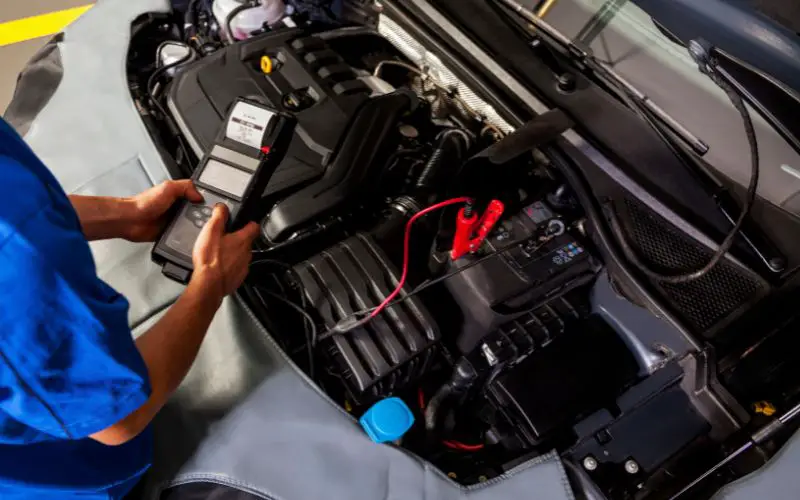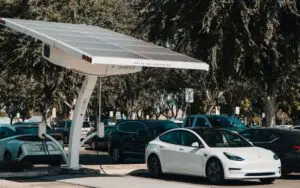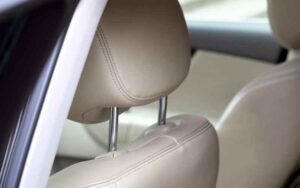Tesla Ah Battery: Unpacking the Mystery!
Last updated on September 21st, 2023 at 09:40 am
Your Tesla comprises different internal components, including the battery, which is essential. One crucial detail to note about your battery is its Ah rating.
Ah, rating indicates the energy capacity of your battery. Although similar to the kWh rating, it doesn’t include the voltage rating.
If you’re curious about your Tesla battery’s Ah rating, you may wonder how to find it.
To determine the Ah rating of your Tesla model, you can refer to the user manual or the Tesla website. It’s important to note that the Ah rating may vary due to different factors. First, find the kWh rating and multiply it by 1000 to calculate the exact Ah rating. Then, divide the result by the voltage value.
In this article, I will share the standard Ah rating for each Tesla model and provide insights into what factors can cause the Ah rating to decrease.
Additionally, I will offer some tips on how to prevent this from happening.
What Is the Total Ah of a Standard Tesla Battery?

Here is a table to show the total battery Ah rating for each Tesla model.
| Tesla Model | Battery Ah Specification |
|---|---|
| Model S | Early Model: 60Ah-85AhPost 2016 Model S: 75 Ah-100Ah |
| Model 3 | Standard range: 50Ah to 55AhLong Range: 70Ah-75Ah |
| Model X | Early Model X: 60Ah-85AhPost-2016 Model X: 75Ah-100Ah |
| Model y | Standard Range: 50 Ah-55AhLong range 70 Ah-75Ah |
The Ah rating in your Tesla battery may vary due to several reasons. You may have to check yourself to find out the specific Ah rating of your Tesla.
Kwh and Ah are both units that represent the energy capacity of our Tesla battery. The difference between kWh and Ah is that Ah does not consider voltage rating.
One easy way to check the Ah rating of your Tesla is by using the voltage and the capacity in KWh.
Multiply the capacity value in kWh by 1000 and then divide the result by the voltage value.
Therefore, the lower the voltage value of your Tesla battery, the higher the Ah rating.
What Are the Ways to Identify if a Tesla Has a 4680 Battery?
When it comes to tesla’s 4680 battery identification methods, there are a few ways to determine if a Tesla vehicle is equipped with this advanced battery technology. Firstly, you can check the vehicle’s specifications or consult Tesla’s website for information on battery upgrades and model-specific features. Additionally, analyzing the vehicle’s charging capabilities or examining the VIN number for any references to the 4680 battery can provide clues. Finally, reaching out to Tesla customer support or communicating with experienced Tesla owners can offer insights into distinguishing whether a Tesla has a 4680 battery.
What Is the Tesla AH Battery Specification for Each Model?
Here is a table to show the Ah battery specification for each Tesla model.
| Tesla Model | Battery Type | Battery Capacity (kWh) | Voltage rating | Battery Capacity (Ah) |
|---|---|---|---|---|
| Tesla Model 3 | Lithium-ion | 60 kWh | 400 volts | 150 Ah |
| Tesla Model S | Lithium-ion | 100 kWh | 400 volts | 250 Ah |
| Tesla Model X | Lithium-ion | 100 kWh | 400 volts | 250 Alit |
| Tesla Model Y | Lithium-ion | 60 kWh | 400 volts | 150 Ah |
| Tesla Roadster | Lithium-ion | 200 kWh | 480 vo#ts | 416 Ah |
You should be aware that the Ah value of your battery may vary due to certain factors. Here are some of those factors.
#1. Temperature
Putting your Tesla through extreme weather conditions is never favorable. Harsh temperatures, either hot or cold, can degrade the efficiency of your battery and reduce its Ah rating.
#2. Driving Habits
The way you drive can impact the capacity of your Tesla battery.
Engaging in reckless driving behaviors, such as aggressive driving or frequent long trips, can increase your Tesla’s energy consumption rate.
When this happens, the battery’s rate and Ah rating may decrease.
#3. Charging Habits
Here are some unfavorable charging habits that may affect the Ah rating of your Tesla:
- Charging up to 100% for daily use.
- Constantly using speed charging.
- Allowing the battery to lose all charging before connecting it to a power source.
These habits will cause your battery to degrade over time, reducing its capacity, range, and Ah rating.
#4. Battery Chemistry and Configuration
Some Tesla models contain batteries made of NCA (Nickel Cobalt Aluminium), NCM (Nickel Cobalt Manganese or LFP (Lithium Iron Phosphate).
Tesla models S and X, made earlier than 2016, utilized NCA chemistry, while models after 2016 use NCM chemistry.
Some Tesla Model 3 and Y cars use NCA chemistry, while some use LFP.
The components that make up your Tesla battery chemistry may affect its Ah rating.
Tesla updates battery configuration to energy density, design enhancement, and cost optimization factors.
The battery configuration consists of modules and cells, which may affect its Ah configuration.
#5. Age
It is important to understand that even with proper care, your Tesla battery will inevitably degrade over time.
The lifespan of a Tesla battery, regardless of its model, is typically eight years.
As your battery begins to degrade, you may notice a decrease in its energy capacity, measured in Ah (Ah rating).
You should be ready to pay for battery replacement when it starts to degrade.
Get a recommendation from Tesla and contact a professional to replace the battery with a new and approved Tesla battery.
Here are some tips to take note of to maintain the Ah rating of your Tesla battery:
- Ensure to follow the car manual in terms of charging habits.
- Use only Tesla-approved chargers for your Tesla battery. Third-party chargers will reduce your battery’s Ah rating and may cause damage to the battery itself.
- Do not use supercharging methods for your Tesla battery frequently. You should only adopt the supercharging method for long trips.
- Avoid charging your Tesla battery up to 100%.
- Always keep your battery charge between 20%-80% to optimize its battery life.
- Do not expose your Tesla to extreme temperatures. Harsh conditions may cause your Tesla battery to degrade, thereby decreasing its Ah rating.
- Make use of regenerative braking from time to time.
- Always maintain the proper tire pressure of your Tesla because it influences energy efficiency, affecting the Ah rating.
- Avoid going on frequent long trips or aggressive riding. Putting your Tesla under constant stress influences the battery’s efficiency and affects the Ah rating.
- Consult a technician when you notice any fault in your Tesla battery.
- Always ensure to install updates on your Tesla. Some of the updates include improving the Ah rating of your Tesla battery.
For hassle-free updates on your Tesla, enable the automatic software update feature in your vehicle’s settings.
To do this, go to the controls icon at the bottom left of your touchscreen display, then select software and navigate to the software update preferences icon.
From there, tap on software updates settings, look for automatic updates, and switch it on. Stay connected to wifi at all times to ensure you receive all updates.
If you have trouble connecting to wifi, you can still manually check for software updates
on your Tesla. Firstly, power on your Tesla to activate the touchscreen display.
Next, go to the “controls” section in the screen’s bottom left corner. From there, select “software” to access the software update menu.
You can view all the recent updates made on your Tesla in the software update menu. To check for new updates, select “check for updates” and wait for your vehicle to search for them.
Connecting your Tesla to a strong Wi-Fi network before downloading updates is important. Once the updates are in, your Tesla will provide instructions on how to install it.
You can track the progress of the installation using the indicator provided. After installation, you may need to restart the car and test the updates.

Hey, I’m Michael Davis, a 35-year-old with a degree and a love for cars and tech. Since I was a kid, cars have been my thing—so much that I even thought they ran on magic beans! Fast forward, and I’ve built Vehicle Army, your one-stop-shop for easy-to-understand car facts.







